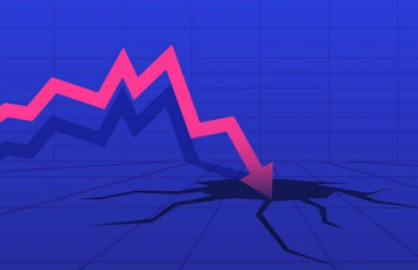
Daniel Rogers
Aug 19, 2022 17:22
Candy stocks are at a turning point. On the one hand, the industry needs to adjust to consumers' shifting tastes for healthier food options. The center aisle's staples, such as processed and prepackaged meals, are losing favor with consumers consistently.
However, several of the well-known candy stocks have unique brand names that continue to dominate their respective portfolios. The industry's future of innovation through new goods and acquisitions can be supported by these brands' ability to continue to produce earnings and cash flow.
Investors may see sweet profits if candy manufacturers can adapt to shifting customer preferences. These ten stocks on this list distribute dividends to stockholders, and you might think about including these stocks in your portfolio.
Candy, often known as sweets or lollipops, is a confection made primarily of sugar. Any sweet confection, such as chocolate, chewing gum, and sugar candy, is included in the category known as sugar confectionery. Candied foods include fruits, vegetables, and nuts coated in sugar and glazed.
Candy is physically distinguished by a sizable amount of sugar or sugar substitutes. Candies are typically created in smaller pieces than a cake or loaf of bread, which several people would share. However, individuals' perspectives on food can influence what is deemed candy. Unlike dessert pastries, candy is often enjoyed between meals as a snack, often with the fingers. Unlike desserts, each culture has its definition of what constitutes candy. The same dish could be considered a dessert in one culture, while in another, it could be called candy.

The Tootsie Roll, the company's eponymous product, was initially developed in the late 1890s, giving rise to Tootsie Roll Industries, Inc. More candy and gum products are available now from the brand. DOTS, Junior Mints, Andes, Charms, Blow-Pops, Sugar Daddy, and Dubble Bubble are a few other well-known brands.
Due to her ownership of 82.8% of Class B shares and about 53.9% of Common Stock, Tootsie Roll's Chairwoman and CEO, Ellen R. Gordon, effectively controls the company. In 2020, total revenue was roughly $471 million.
On July 21, 2021, Tootsie Roll released Q2 solid 2021 results. The quarter's net sales increased by 44% to $114.6M from $79.8M the year prior, and net income increased from $7.4 million to $9.8 million in the same period. On a year-over-year basis, diluted EPS climbed 27% to $0.14 per share from $0.11.
Since we believe the company to be significantly overvalued, we anticipate total returns to be just below 2% annually. This is anticipated to outweigh the dividend yield of 1.2% and yearly earnings per share growth of 3%.
In addition to being a renowned chocolatier, Nestle has a vast empire of food and household goods. The Swiss corporation sells a variety of sweets under the Nestle brand and holds the international distribution rights for KitKat, Butterfinger, and Milky Way candy bars.
In 2018, Nestle paid privately held Ferrero Group $2.8 billion for the U.S. rights to its candy bar and confectionery business, including Baby Ruth, 100 Grand, and Crunch bars.
Even after selling its U.S. chocolate business, Nestle, a top brand for investing in everyday necessities, is still quite present in the market. Although the food industry will not experience significant growth, millions of households worldwide depend on its products regularly. Along the way, Nestle stock also pays a respectable dividend and has a long history of progressively increasing its shareholder payment.
The Hershey Company produces and markets a variety of sweets, such as chocolate, gum, syrups, and spreads. Among the Hershey's treats that trick-or-treaters may receive are Reese's Peanut Butter Cups, Kit Kats, Twizzlers, and Ice Breakers. The Pennsylvania-based chocolatier continued this year with its entry into the food market by paying $397 million for the protein bar manufacturer One Brands. Hershey's adjusted profits per share for the third quarter were $1.61, which was in line with market expectations. Sales-wise, the $2.1 billion in revenue for the quarter increased 2.6% over the previous quarter last year. As of Halloween 2019, Hershey stock has a $30.50 billion market valuation, yields 2.15% in dividends, and is trading nearly 40% higher.
Between February and August, the stock of the candy manufacturer trended rapidly higher, with pullbacks continuing to trade well above the 50-day simple moving average (SMA). The stock has reversed within a depressing pattern since hitting a 52-week high at the beginning of September. In the trading session on Tuesday, the price gained support from the lower trendline of the pattern. Price seems set to test the channel's upper trendline in the following days, where traders could place a take-profit order. As an alternative, investors can try to sell near the previous 52-week high at $162.20. Consider limiting losses if the stock reverses below this month's swing low at $140.49.
Philip Morris and General Foods Corp. merged in 1989, creating Mondelez. Since then, the company has experienced several acquisitions and spinoffs, including Kraft Foods, it is North American supermarket division. The remaining portion of the company is now known as Mondelez, and that section is now a part of Kraft Heinz (KHC).
The company that processes food worldwide earns more than $26 billion annually. On July 27, 2021, Mondelez released Q2 data showing significant improvement in Latin America. Net sales increased 12.4% over the prior year for the quarter, thanks to acquisitions, favorable currency, and organic revenue growth of 6.2%.
Latin America saw a 31% increase in revenue, followed by Asia, the Middle East, and Africa at 17.4%, and Europe at 15.7%. Sales increase last quarter was 16.5% in emerging markets. Adjusted EPS increased by 8.2% (and 1.6% when measured in constant currency) to $0.66 for the quarter.
Over the next five years, Mondelez's EPS is projected to increase by 8% annually. Since shares are expensive, annual returns are anticipated to be modestly reduced by a declining P/E multiple. Total projected gains at a 2.3% dividend yield are pegged at 8.9% annually.
The leader in premium chocolate, Switzerland-based Lindt & Sprungli, will complete this ranking. It is the minor stock on this list, but it is also one of the largest confectionary companies with the fastest growth. The holding firm is the owner of Hofbauer & Küfferle, Ghirardelli, Russell Stover, Caffarel, Lindt, and more.
Although Lindt uses retail partners to distribute its chocolates globally, its store network is a distinct selling point and draws customers to busy tourist and shopping districts. Total sales had increased by 50% since 2014, when Lindt acquired Russell Stover to become the leading producer of luxury chocolate in the United States. Although the company does not now pay out many dividends, the faster growth rate makes up for that.
Recall our advice to "invest in what you love"? In 1975, Warren Buffett became enamored with See's candies and chocolates to the point where he decided to purchase the business and incorporate it into Berkshire Hathaway.
It made little difference that Berkshire Hathaway spent most of its time as a textile business before that acquisition. Thirteen years later, Buffett was constructing a global company that had nothing to do with textiles. While See's continues to sell assorted chocolates, it ramps up its Halloween selection with the addition of orange chocolate wafers, pumpkin spice lollipops, orange twist sweets, and chocolate marshmallow jack o' lanterns. At more than $182 per share, the stock is doing well and has more than doubled in value over the past five years.
In reality, one of the top candy stocks is more of a candy store. Bulk candy purchases are every day at large shops like Walmart and Target. The issue is that Walmart and Target have a wide variety of goods. Because of this, it is unlikely that more candy sales will significantly impact their financial performance or stock price.
Contrarily, despite being a much smaller store, Dollar General is still a popular place for consumers to purchase inexpensive Halloween candy. DG is one of the few retailers that has survived the growth of eCommerce. Even during the pandemic, its sales have increased each year for the past five years. Dollar General reported $33 billion in sales and $2.66 billion in profit for 2021. Additionally, Dollar General will continue to provide consumers with a low-cost shopping choice as long as costs keep rising.
There are presently 17,683 Dollar General locations in 48 states in the United States. According to a fast calculation, this equates to around 368 stores in each state. This implies that anyone wishing to purchase inexpensive candy has a ready alternative in Dollar General, which also qualifies as a good candy stock option. The price of Dollar General stock has increased by around 5% in 2021 and by more than 200% over the previous five years.
Rocky Mountain Chocolate Factory, Inc. (RMCF), a manufacturer and franchisee of chocolate chocolates and confectionery goods, has a market capitalization of $53.90 million. It has about 360 locations. Halloween staples, including clusters, caramels, candied apples, mints, truffles, and molded chocolates, are among its offerings; these are the perfect sweets to give to people who do not have a bag of tricks. The chocolate manufacturer, situated in Durango, Colorado, reported earnings per share (EPS) of 15 cents for the September quarter on revenue of $7.39 million. The Rocky Mountain stock has increased 9.77% YTD since October 31, 2019. Even more impressively, the company provides a dividend yield of 5.34%.
Rocky Mountain's share price has varied within a symmetrical triangle since the beginning of May, which has helped establish different levels of support and resistance. The stock price has dropped to $9 over the last three weeks; this level is close to the lower trendline and 200-day SMA of the triangle formation and should attract buyers. Additionally, the relative strength index (RSI) shows almost oversold conditions and could lead to a tradeable upside bounce. Consider placing a stop order below $8.80 and aiming for a move to either the triangle's upper trendline at $9.45 or 2019 high at $9.65 in terms of trade management.
Ingredion, Inc. produces and sells sweeteners, starches, nutrition components, and biomaterial solutions through the wet milling and processing of maize and other starch-based materials. Its activities include producing biomaterials and value-added ingredients for food, beverage, paper, corrugating brewing, and other sectors from corn, tapioca, potatoes, and other vegetables and fruits. The company's geographic divisions include North America, South America, Asia-Pacific, Europe, the Middle East, and Africa (EMEA). Businesses in the US, Mexico, and Canada are included in the North America category. The South America sector includes businesses from Brazil, the Southern Cone of South America, Colombia, and Ecuador. Asia-Pacific includes companies from South Korea, Thailand, China, Australia, Japan, New Zealand, Indonesia, Singapore, the Philippines, Malaysia, and Vietnam. EMEA focuses primarily on businesses in Pakistan, Germany, the United Kingdom, and South Africa. The business was established in 1906, and its main office is in Westchester, Illinois.
The company Hostess Brands, Inc. creates, produces, markets, sells and distributes baked goods. It conducts business through the Snacking sector, which includes frozen retail foods and sweet baked goods offered under the Hostess®, Dolly Madison®, Cloverhill®, Big Texas®, and Voortman® brands. The business was established in 1919, and its main office is in Lenexa, Kansas.
Candy is not the theme with the best growth potential among investing themes in the consumer staples sector of the stock market. However, there will likely always be a demand for chocolate and other sweets. Sales of chocolate are still increasing as more people in developing countries enter the middle class, and previously unaffordable goods like chocolate become more frequent on grocery lists.
Shortly put, candy stocks currently face two significant issues. Falling demand for the primary product raises concerns about the industry's future growth rate, much as it does for many processed food competitors.
The major candy stocks also typically trade for above-average valuations. These two points taken together can result in disappointing investor returns.
Of course, there are also good reasons to be optimistic. The famous candy brands continue to be very profitable, enabling businesses to finance expansion activities, such as developing new goods or expanding into other product categories through acquisitions.
The major candy stocks offer shareholders respectable dividend yields in the interim. Due to its predicted returns of 9%, Mondelez International is currently the top-ranked candy stock on our list.

Aug 19, 2022 17:09

Aug 22, 2022 11:46